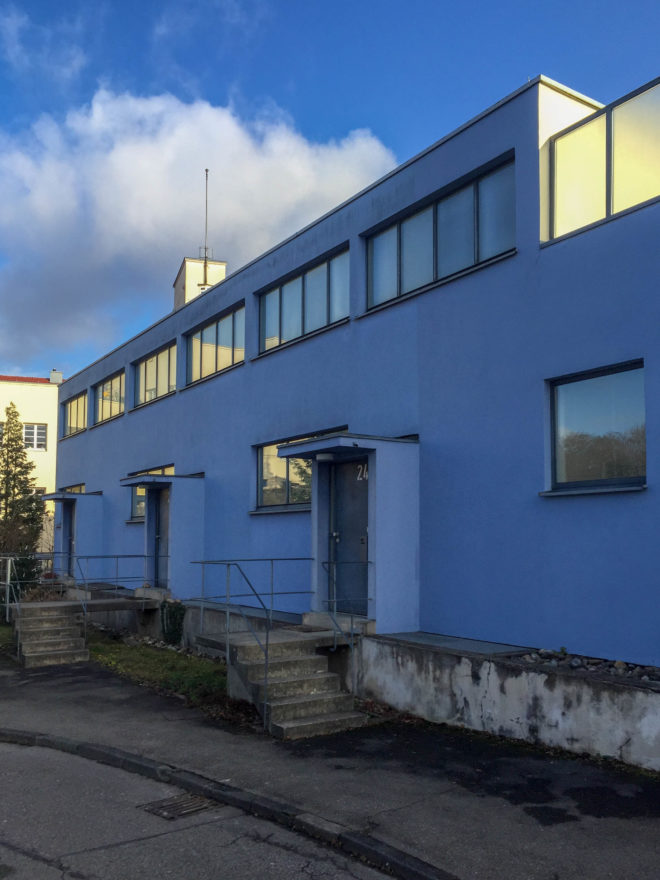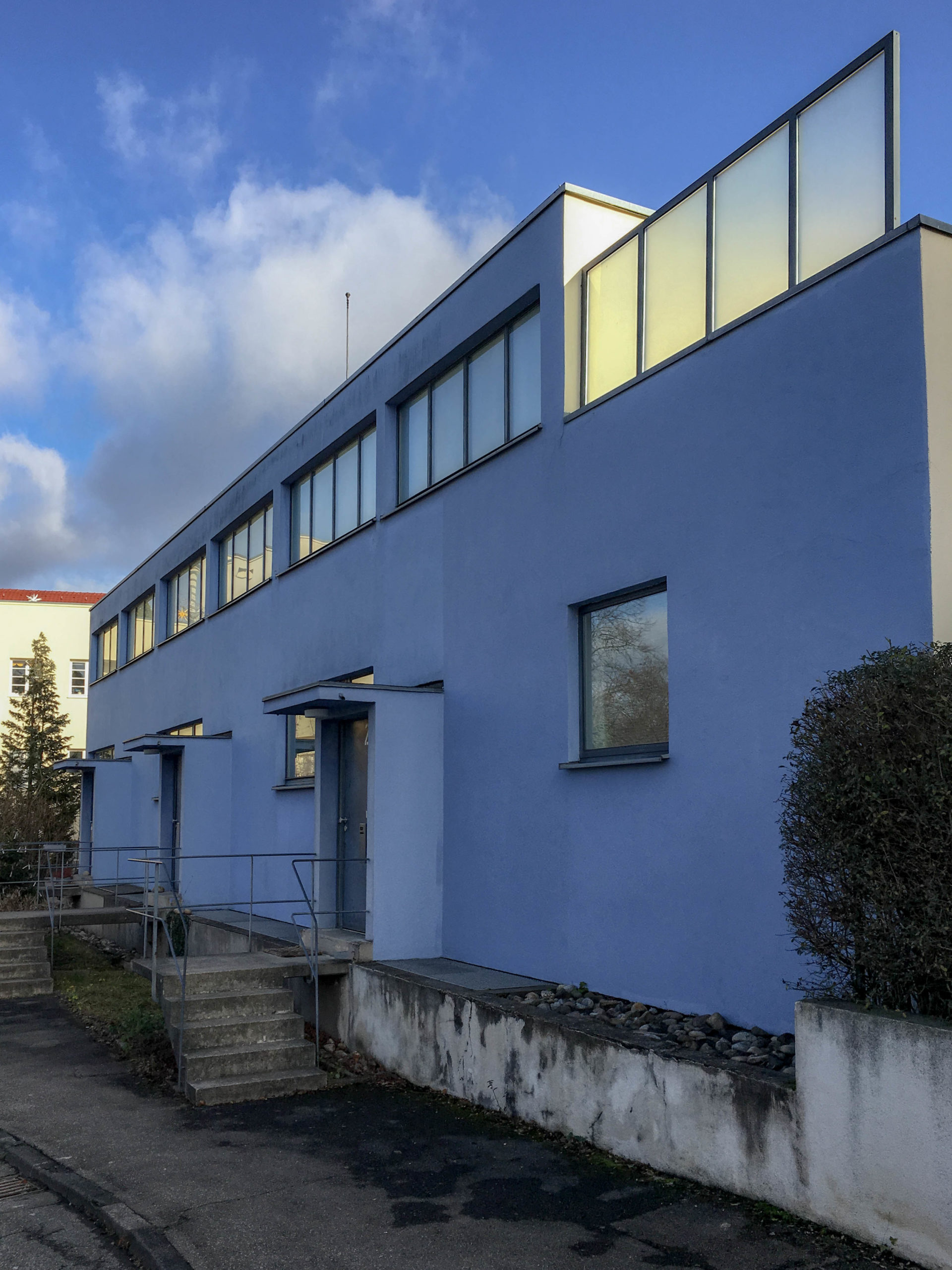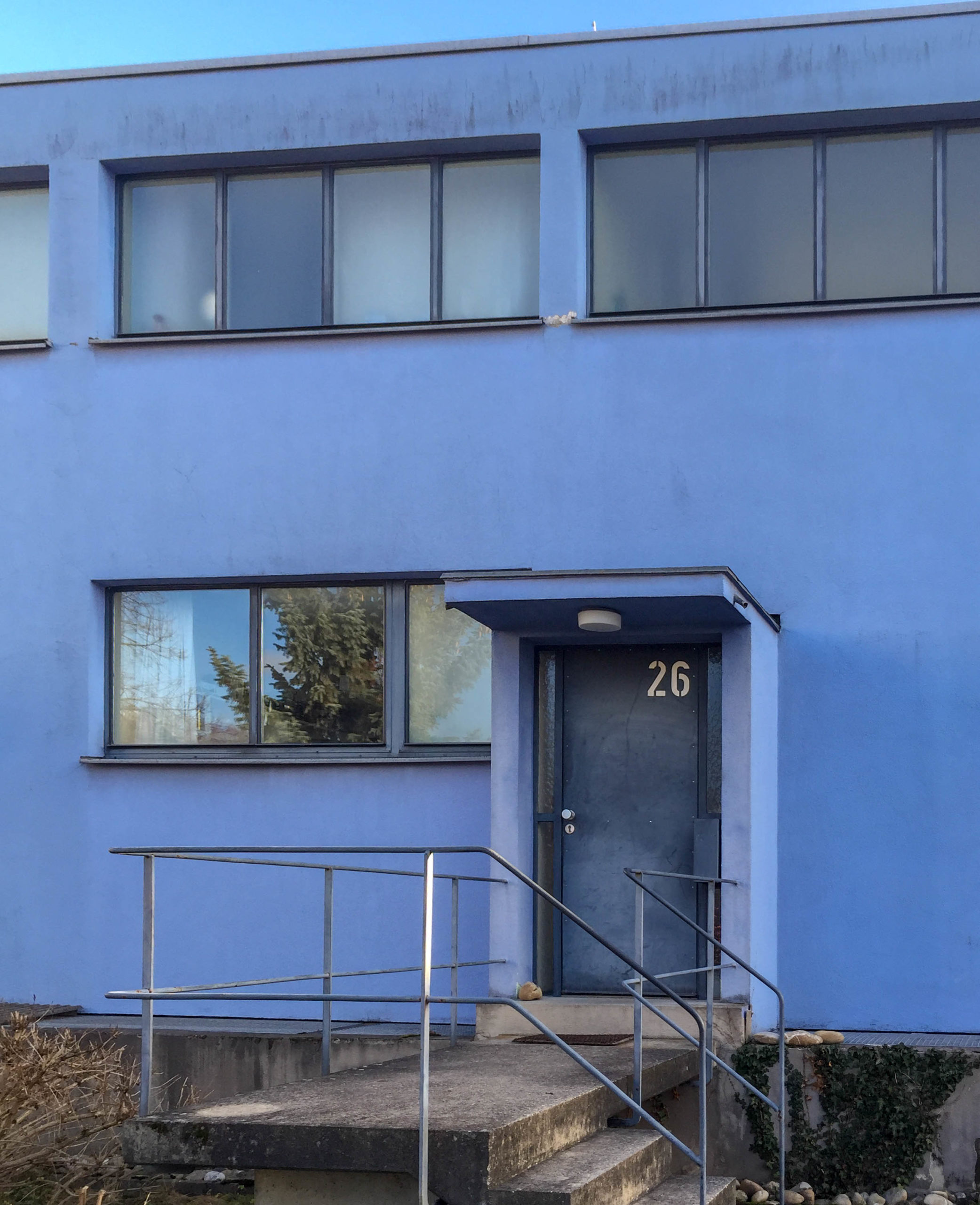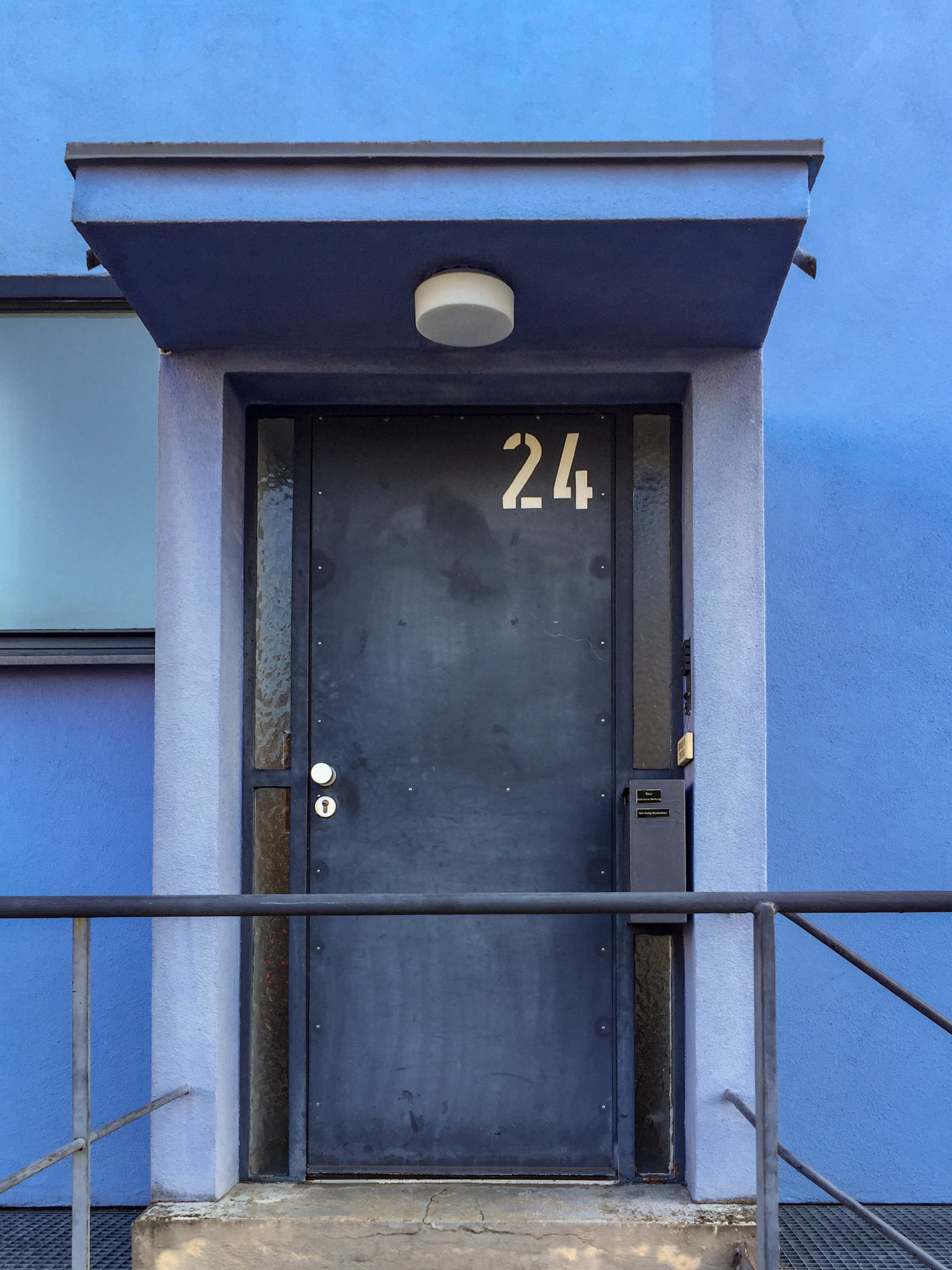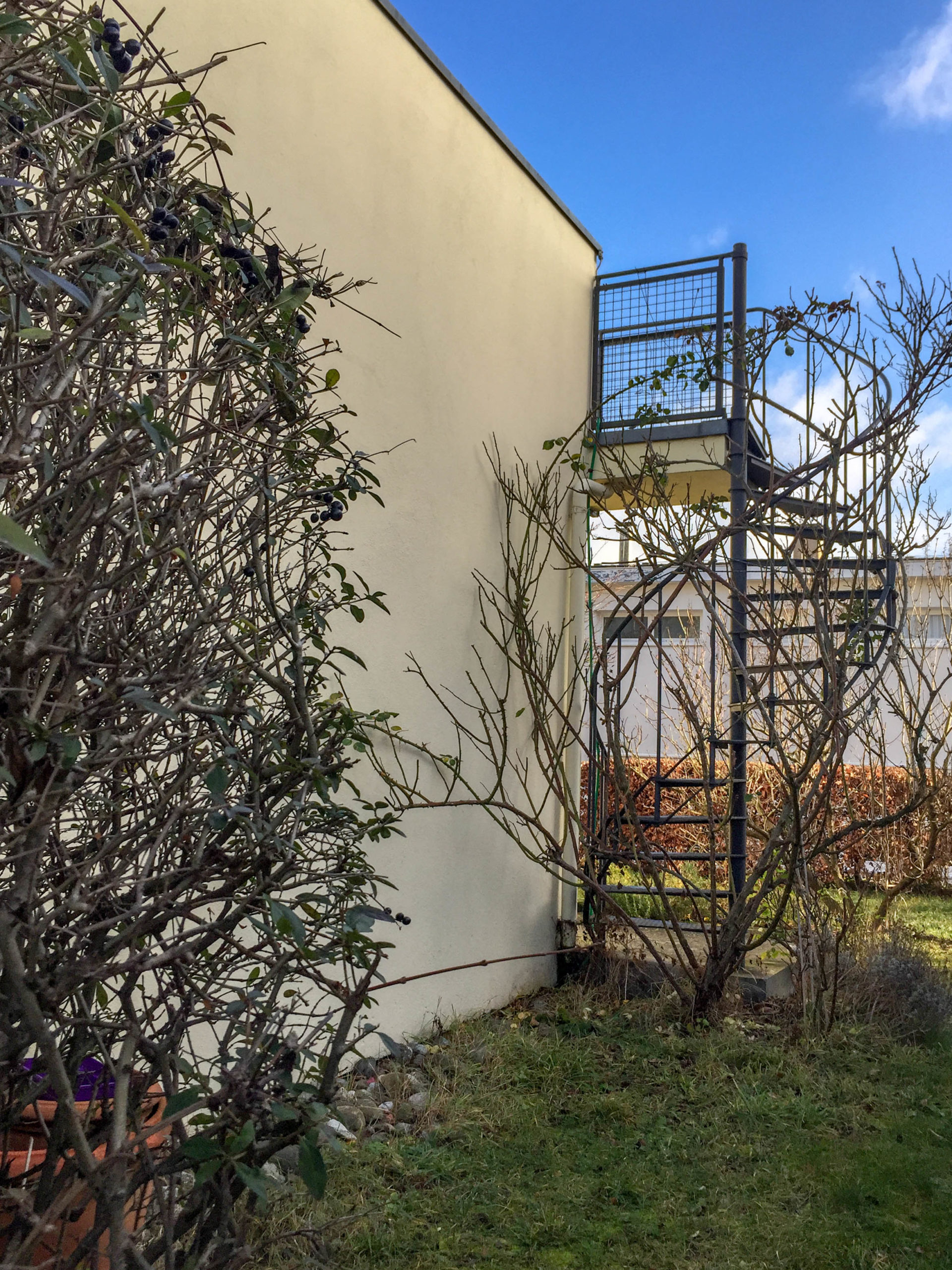1927
Architect: Mart Stam
Am Weissenhof 24-28, Stuttgart
Weissenhof Estate
The Weissenhof Estate was built in 1927 as part of the building exhibition “Die Wohnung”, organized by the Deutscher Werkbund and financed by the city of Stuttgart.
During the exhibition, the 33 realized houses could be viewed from the outside and inside. Afterwards, they were rented out by the city.
Seventeen international architects under the artistic direction of Ludwig Mies van der Rohe, presented their innovative designs for modern, healthy, affordable and functional living.
Model Houses
In addition to the model houses in the Weissenhof Estate, there were three other exhibitions on modern building worldwide, interior design and new building materials and constructions.
Within just four months, 500,000 visitors came to see the exhibition, which had a worldwide resonance.
Avantgarde
The Weissenhof Estate showed the then current development of architecture and housing.
A formal coherence was achieved through the avant-garde architectural views of the contributing architects and the specification of flat roofs.
Mart Stam Terraced Houses
In Mart Stam‘s group of terraced houses, a system of sliding doors allows alternating additions of rooms.
The two houses on the left have a living area of 105 square meters.
Here the living room is connected with a lower garden room.
The right house has a living space of 111 square meters.
It is complemented on the side by an additional study with a roof terrace and spiral staircase.
By exploiting the slope and raising the first floor, it was possible to gain an additional third floor on the garden side.
The color scheme of the facade with lavender-blue and ochre painting is documented by descriptions and color analysis.
The houses are built in a mixed construction of iron skeleton and solid construction.
The walls are made of hollow pumice blocks, the ceilings are reinforced concrete hollow core ceilings.
1933 to 1945
During the National Socialist dictatorship, the housing estate was threatened with demolition and was sold to the German Reich for this purpose.
However, the outbreak of the war prevented the demolition plans.
As a counter design, the Kochenhofsiedlung was built within sight of the Weissenhof by representatives of the Stuttgart School.
With the Ziegelklinge estate (1927-1928), the Inselsiedlung (1929-1930) and the Wallmersiedlung (1929-1931), three further Neues Bauen estates had previously been built in Stuttgart.
During the Second World War, an anti-aircraft position was established below the Weißenhofsiedlung. Parts of the settlement were destroyed during the air raids on Stuttgart.
After 1945
Following the war, some only slightly damaged buildings were demolished, while others were severely altered by gable roof additions.
In 1958, the settlement was listed as a historical monument.
Renovation of the remaining buildings took place in the 1980s.
Le Corbusier World Heritage
The city Stuttgart acquired the semi-detached house by Le Corbusier and Pierre Jeanneret belonging to the estate from the federal government in 2002.
On October 25, 2006, the Weissenhof Museum with historical documents and architectural models was opened in the building after three years of faithful restoration.
In July 2016, it was added to the UNESCO World Heritage List together with the Citröhan House as one of a total of 17 partial sites under the designation The Architectural Work of Le Corbusier – An Outstanding Contribution to the Modern Movement.
Weissenhofsiedlung today
In January 2019, Stuttgarter Wohnungs- und Städtebaugesellschaft mbH (SWSG) took over the Weissenhofsiedlung from the Bundesanstalt für Immobilienaufgaben (BImA).
A total of 37 buildings with 87 apartments are now in municipal hands.

